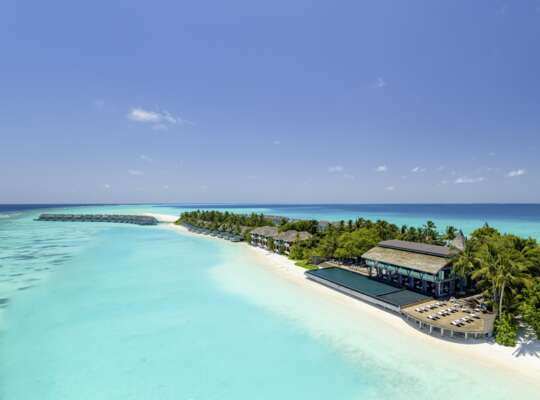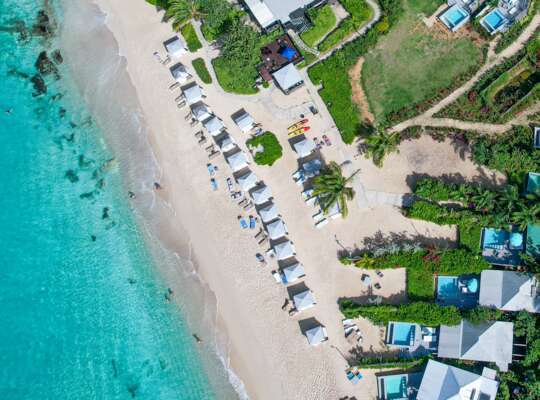India is home to 42 UNESCO World Heritage Sites that represent a dazzling blend of history and mind-bending architecture. While its most coveted site remains the iconic Taj Mahal, many more lay scattered across the states from the Himalayan north to the scorched south, built by Mughal emperors, Rajput rulers and colonial conquerors. Here are the top 10 UNESCO World Heritage Sites in India that should make it onto your bucket list, from mountain railways to garden tombs, hill forts and rock-carved temples.
Taj Mahal
India’s most famous UNESCO site is Emperor Shah Jahan’s epic monument to love, the mausoleum of his favourite wife Mumtaz Mahal. Set on the banks of the Yamuna River in Agra, the Taj Mahal is cherished for its Indo-Islamic architecture; a blaze of white marble with glittering precious-stone inlays, detailed carvings and plump domes. Explore the Taj Mahal at sunrise to beat the crowds and watch the first rays of light paint the monument in buttery-gold shades. Roam the gardens dotted with fountains and reflection pools, soaking up the glory of one of the New Seven Wonders of the World. We promise it’ll be a highlight on your Golden Triangle trip.
Red Fort
Marvel at Delhi’s striking Red Fort, named for its rust-hued sandstone. This prized UNESCO site was built in the mid-17th century and was another of Mughal emperor Shah Jahan’s creations, constructed to mark the shift of the capital city from Agra to Delhi. Protected by imposing walls, the Red Fort is one of India’s finest examples of Mughal architecture and inspired a host of other monuments across India with its combination of Persian, Hindu and Timurid design. India first celebrated its independence at the Red Fort on 15th August 1947 with a historic speech from the country’s first prime minister Jawaharlal Nehru, an event still commemorated here today. Visit the Red Fort on a Delhi by dawn tour, before the crowds arrive.
Mountain railways of India
Board one of India’s three UNESCO-listed mountain railways, built between 1881 and 1908, on a trip to the eastern or western Himalayas. Colonial construction for the Darjeeling, Nilgiri and Kalka-Shimla lines was an astounding engineering feat that involved traversing tough mountainous terrain with snake-like switch backs, steel-skeleton bridges and tunnels that burrowed through the landscape. You can ride these colourful toy trains, stopping at former colonial hill stations which were brought to life by these vital rail connections. As your train puffs its way along winding narrow tracks, views of frosted Himalayan peaks, carpets of emerald tea bushes and swaying rice paddies unfold before you. On the Darjeeling line, pause at the gold-tinged Ghoom Monastery, a Tibetan wonder.
Hampi monuments
Discover the remains of Hampi while negotiating India’s intriguing south. As the capital of the Hindu Vijayanagara Empire for over two centuries until it was sacked by Deccan Sultanates in 1565, the city was a powerhouse of forts and temples. Tour the ruins of this lost empire, which is listed by UNESCO for its well-preserved Dravidian architecture. Navigate the abandoned city on foot or by bike, taking in the once flourishing palaces and rock temples, aqueducts and lotus-shaped pavilions. Highlights include the Virupaksha Temple, dedicated to Lord Shiva, and climbing Hemakuta Hill for sweeping views over the ruins.
Hill forts of Rajasthan
Explore magical Rajasthan’s six UNESCO-listed hill forts: Chittorgarh, Kumbhalgarh, Sawai Madhopur, Jhalawar, Jaisalmer and Jaipur’s Amber Fort. The fortresses were all constructed between the 8th and 18th centuries by mighty Rajput kingdoms and remain examples of eclectic Mughal and Sultanate architecture. Both with huge encircling walls, the forts used natural defences such as thick forest in Ranthambore and Jaisalmer’s unforgiving desert to bolster their protection. Inside their walls lay thriving cities which still partly exist today, with maze-like bazars, palaces and temples. Visit Jaipur’s Amber Fort, a pale sandstone group of grand gates, frescos, royal chambers and mirrored halls.
Mahabalipuram rock monuments
Journey into the heart of Karnataka and Tamil Nadu to see Mahabalipuram’s collection of 40 rock caves and Hindu temples. Mahabalipuram was a prosperous port city in the 7th-8th centuries under the Pallava dynasty, who were responsible for painstakingly hand-carving these monuments out of the Coromandel Coast. You’ll tour rathas – chariot-shaped monolithic temples – and rock-cut caves called mandapas. Don’t miss the open-air Descent of the Ganges relief, a piece of art that tells the Hindu origin story of India’s sacred River Ganges. The monuments at Mahabalipuram were so prominent that they influenced temples as far away as Cambodia and Vietnam.
Jaipur City
Known as the Pink City for its rose-coloured buildings, Jaipur is an essential stop on any Golden Triangle trip. The whole city has been awarded UNESCO status for its walled, grid-like design which features large squares and Vedic architecture. Jaipur was designed by Rajput ruler Jai Singh II in 1727 and its streets still showcase the city’s original palaces, bazars in which skilled artisans tout their work and family havelis. Discover Jaipur’s architectural treasures on foot with a local guide including the Rajput-era royal garden and observatory and religious gems like Govind Dev Ji Temple.
Fatehpur Sikri
Fatehpur Sikri, the City of Victory, is lauded by UNESCO for its stately monuments and temples. As the capital of the Mughal Empire for a brief decade in the late 16th century, Fatehpur Sikri was once a mass of religious buildings, gateways and palaces all built in uniform architectural style, ruled over by Emperor Akbar. Its most impressive sites include the Jama Masjid, one of India’s largest mosques, and Panch Mahal Palace. After the capital was moved to Lahore in 1585, the city was largely abandoned but its remnants can be uncovered on a tour of this red sandstone city with its towers, gates and Mughal legacy.
Humayun’s Tomb
Delhi has three UNESCO World Heritage Sites, one of its most popular being Humayun’s Tomb. It was built by the emperor Humayun’s wife Begum Bega in the 1560s to honour her late husband and became the blue-print for decorative garden tombs all over India – a predecessor even to the Taj Mahal. Wander the four-quadrant, Persian-style gardens with their sparkling pools and pavilions. The mausoleum itself takes centre stage, set on a platform surrounded by vaulted cells where over 150 Mughal family members rest alongside the emperor.
Agra Fort
There’s more to Agra than the Taj Mahal, including its majestic fort, which is a UNESCO World Heritage Site in its own right. The red-sandstone fortress lies within walking distance of the Taj and formed part of a Mughal complex built in the mid-16th century by emperors Akbar and grandson Shah Jahan. Admire the mix of Indo-Islamic, Persian and Timurid architecture that lies behind Agra Fort’s 2.5-kilometre walls, visible in a collection of palaces, mosques and audience halls. Experience both of Agra’s UNESCO jewels on a tour of Agra Fort and the Taj Mahal.




_w=24_h=25.webp?v=a392d311dd743e3625a1f57ba6fc3b967468f36c)
_w=24_h=25.webp?v=a392d311dd743e3625a1f57ba6fc3b967468f36c)
_w=24_h=25.webp?v=a392d311dd743e3625a1f57ba6fc3b967468f36c)